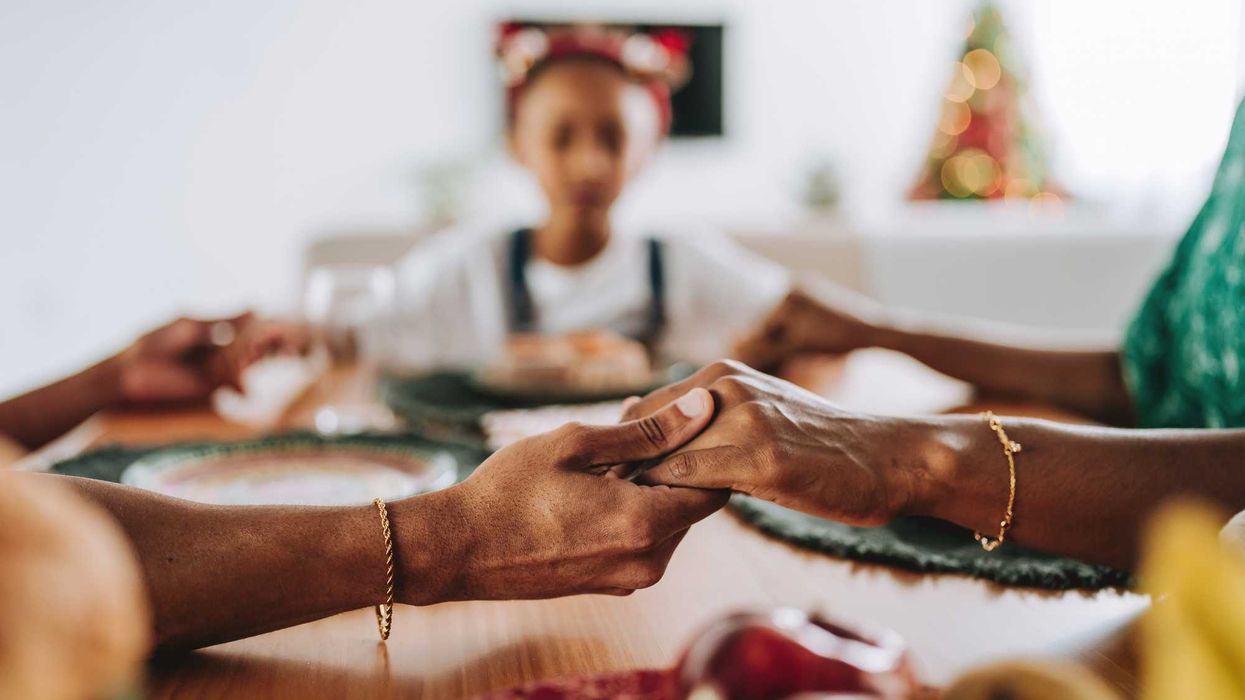Threat minimizes compassion. This connection helps to explain two seemingly unrelated questions: Why do those who voted for President Trump seem not to publicly express much concern for the thousands of government workers fired since Inauguration Day? And why do liberals often seem not to talk as much about drug deaths as other issues like gun deaths?
The answers are multi-faceted, of course. This article will focus on one of many reasons: the potential victims of these actions and situations (government workers and drug users) are often directly or indirectly seen as threats by the other side, and it is hard to feel the pain of those who seem to threaten us. Institutions can also be threatening, based on the actions taken by people within those institutions.
Before going too deeply into this argument, we will clarify a few points. Sometimes “threat” overstates feelings Americans feel toward each other, but less-intense emotions like unease or anxiety about each other can also reduce compassion. While drug users directly are not necessarily viewed as threats, some on the political left associate the demographics of those most commonly dying from drug overdoses as associated with having threatening views (e.g., racism, sexism). Finally, this article is not attempting to establish an equivalence across the political spectrum. Still, it does demonstrate that similar processes are at work, in terms of threat, and the associated lack of compassion for people and entities perceived as threatening.
Perceptions of threat across the political spectrum are often overblown. Correcting an overblown sense of threat across politics – a core focus of our organization, More Like US – can actually help achieve goals such as protecting committed government employees or building support to implement policies designed to limit harms such as drug use.
When fellow Americans are seen as less threatening and more worthy of compassion, actions to protect or help them are much more likely to follow.
We can first look at the evidence of limited public responses to the pain of others. The Department of Government Efficiency (DOGE) has been central to many efforts to reduce the size of government, which have involved firing government employees, and most Republican voters support it. A late February Economist / YouGov poll found that three-quarters of Republicans said DOGE should be kept the same or expanded. When Republicans in Congress or the Cabinet have at all criticized DOGE, much of the focus has been on its methods, with a preference for greater precision with DOGE’s actions, rather than emphasizing compassion for government employees. This said, at least a couple of Republican members of Congress have mentioned the importance of compassion for civil servants, including Rep. Rich McCormick (R-GA) and Sen. John Curtis (R-UT).
There were more than twice as many deaths from drug overdoses than guns in 2023, about 105,000 vs. 47,000. (Both figures are, of course, catastrophic and depressing.) And while prominent organizations are advocating for gun control, such as Everytown for Gun Safety, strongly supported by billionaire and former NYC mayor Michael Bloomberg, few if any organizations dedicated to drug or opioid overdoses have such prominence.
According to the Impala database, two of Everytown for Gun Safety ’s funds had a combined operating budget of over $88 million in 2023, and conservative think tank Capital Research Center has tracked substantial interest in this space among liberal-leaning donors for at least the last decade.
Meanwhile, the preeminent organizations working to reduce substance abuse disorders are substantially smaller; the Impala database shows the National Harm Reduction Coalition had a budget about one-tenth the size of Everytown for Gun Safety’s in its last reported year of 2022. Despite this greater emphasis on funding organizations focused on guns relative to drugs, there are Democratic members of Congress who have spoken out or introduced legislation about the need to address drug issues, including Reps. Gabe Vasquez (D-NM) and Eric Sorensen (D-IL).
Our organization, More Like US, focuses on political divides, and government workers are likely to be perceived as overwhelmingly Democrats. Federal workers are more likely to vote for Democrats than Republicans, but they are far from a monolithic group. A 2024 survey from Federal Times found that current and retired non-veteran federal employees planned to vote for the Democratic Party by about a 2:1 margin. However, 30% of Federal employees are military veterans, and they planned to vote Republican by a more than 2:1 margin.
There are also demographics of Federal workers that suggest alignment with Democrats, including higher rates of obtaining at least a bachelor’s degree. Americans with a college degree are now more likely to vote for and identify as Democrats than Republicans.
Meanwhile, drug deaths are heavily concentrated among those without college degrees. The differences are as astounding as they are troubling. In 2021, Americans who had never attended college had a fatal overdose rate roughly 10 times that of those who had a college degree.
Certainly, cross-partisan compassion could exist. Even though many government workers are Democrats and have college degrees, and many drug deaths are concentrated among those without degrees, a demographic that now trends Republican, this does not preclude compassion.
Yet as we have written about before in The Fulcrum, many Americans now have an overblown sense of threat of each other across politics, which we call “overthreat” (overblown + threat). A summary of Intergroup Threat Theory notes that “threat may undermine emotional empathy for outgroup members” and may even encourage schadenfreude, pleasure at the suffering of members of the other group.
Jeff Lees, an Assistant Professor of Organizational Behavior at the University of Groningen, who until recently researched US political divides in the US, wrote to one of the authors, James, in an email, "When we incorrectly assume the other side hates us, we see them as threatening. And we know that perceiving another group as a threat is a psychological trigger for all sorts of hostile behaviors and attitudes. Seeing the other side as a threat can deprive us of our compassion, and we see that playing out in US politics."
Another social psychologist, Kurt Gray of the University of North Carolina, who recently wrote the book Outraged, developed a relevant concept known as moral typecasting, along with the late social psychologist Daniel Wegner. More typecasting suggests that people tend to see others as either villains or victims. Generally aligned with our concept that threat (from a villain) minimizes compassion (for a victim), Gray recently wrote, “We tend to categorize people as either harm-doers or the harmed—rarely both.”
From both the left and the right, those potentially suffering (government workers at risk of getting fired, and drug users at greater risk of overdosing) can be seen as potentially – or actually – threatening.
Those with college degrees have more influence in many, if not most, sectors of society (e.g., media, business, education, medicine, law). But the loudest voices on the right have sometimes described these people as “ elitist,” arguing that these kinds of people can be threatening and rarely should be trusted, as they do not tend to have the interests of Americans who are not like them at heart.
Additionally, some of the loudest voices on the left describe people without college degrees and/or those leaning toward Republicans as more likely to be racist (see here and here), not to mention sexist, homophobic, etc. They are thus portrayed as threatening the well-being of many Americans who do lean toward the Democratic party, given their potential to support efforts to roll back rights.
(Note in both cases that the loudest voices on “both sides” tend to be a small, unrepresentative subset of the population. Both More in Common and Pew found that approximately 15% of the population is in the most extreme ideological categories in their respective political typologies. Unfortunately, this small group tends to be louder, wealthier, and more well-connected, so they account for a disproportionate share of the public discourse about politics. Highlighting how few people dominate the public discussion, Pew found that less than 10% of social media users “often post or share things about political or social issues.”)
In addition to certain individuals being portrayed as threatening, the institutions they run or protect are also perceived as threatening. In these cases, it can be acceptable or even desirable to weaken the institutions, or it can be challenging to pivot and suddenly support institutions and efforts that have long been viewed as dangerous.
Voices on the right sometimes make the connection that those they describe as elitists comprise many aspects of the bureaucracy or “ Deep State.” This can justify current efforts to shrink or eliminate government agencies.
Meanwhile, the public generally thinks a “war on drugs” has been unsuccessful, and those on the political left have at times pointed to its impact leading to mass incarceration, especially of ethnically minority communities. While not impossible, it can require some tricky pivoting to move from fighting what is seen as an overzealous effort to criminalize drug use from police and other officials, some see as threatening, to a newfound mass campaign to more humanely fight a new drug battle. The racial breakdown of recent drug deaths has actually been relatively even, but those on the left can have concerns that efforts to reduce drug deaths will again lead to the use of very different means to deal with addiction among white and non-white users, reminiscent of laws that dealt with cocaine and crack very differently.
So what is there to do?
More Like US advocates for correcting overly negative misperceptions of each other, at scale, including overblown threats. Most directly for the problems explored in this article, messaging toward Trump supporters can help to show that a large majority of government workers want to help the country and all its citizens, and messaging toward Democrats can better portray those most at risk for drug-related overdoses.
Yet there are also broader factors at play. More Like US has an addition/subtraction framework that involves adding trust and subtracting factors, such as overblown threats, that diminish it across the political spectrum. It is important to add trust among Americans, as well as between people and institutions. The subtraction side involves both discouraging people from making statements that exacerbate the situation and disincentivizing perverse incentives across various sectors (e.g., news media, social media, electoral systems, special-interest groups). These perverse incentives encourage the demonization of those across the political spectrum, heightening perceptions of the threat they pose.
Of course, these efforts are longer-term. For those opposed to the Trump Administration, these do not preclude shorter-term efforts, such as legal challenges or protests. And for those trying to reduce drug deaths, short-term goals can include making sure law enforcement and other social services have access to products that can reverse opioid overdoses like Narcan / Naloxone.
But strategies must last beyond the short term. Reducing an overblown sense of threat and rebuilding a solid foundation for trust in the US can protect the lives and livelihoods of many Americans while maintaining or building services that improve well-being for Americans.
James Coan is the co-founder and executive director of More Like US. Coan can be contacted at James@morelikeus.org
Sara Weinstein is a current intern at More Like US.



















